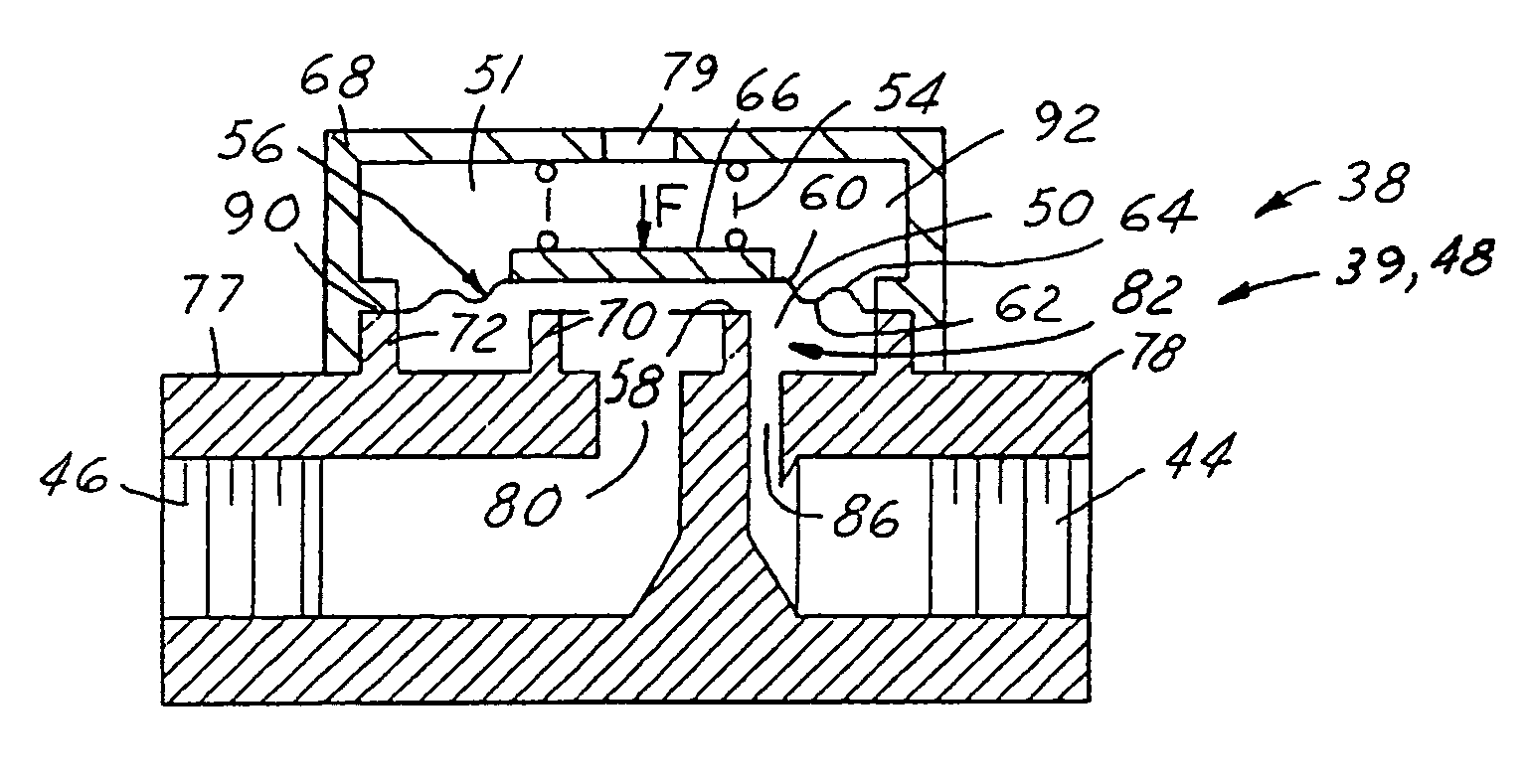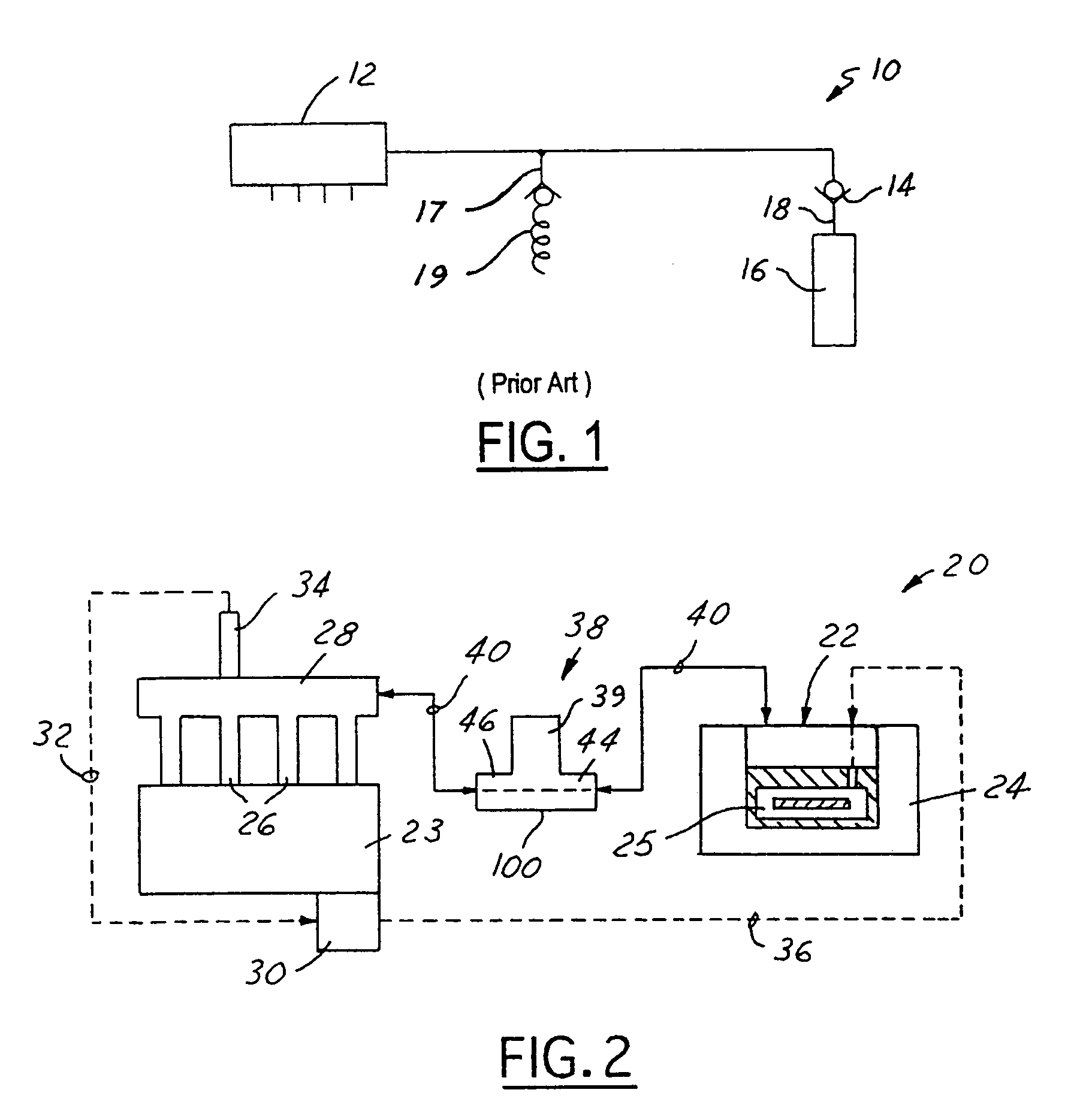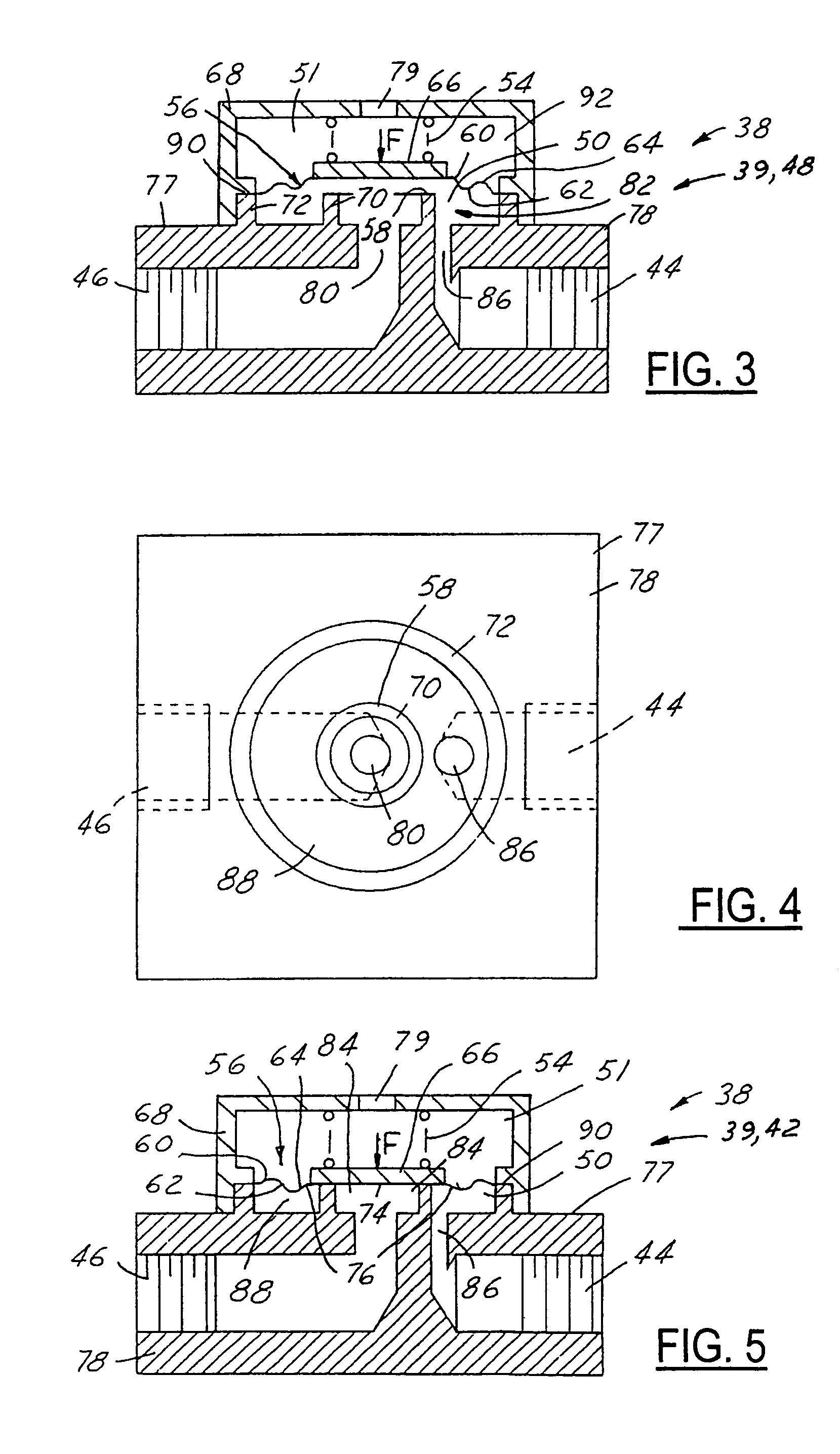No-return loop fuel system
a fuel system and loop technology, applied in the direction of machine/engine, engine diaphragm, diaphragm valve, etc., can solve the problems of fuel rail pressure control range, overpressure condition, pressure spike, etc., to prevent fuel vapor lock at the fuel rail, reduce engine emissions, and improve engine start-up
- Summary
- Abstract
- Description
- Claims
- Application Information
AI Technical Summary
Benefits of technology
Problems solved by technology
Method used
Image
Examples
Embodiment Construction
[0031]As best illustrated in FIG. 2 a no-return loop fuel system 20 of the present invention has a variable speed turbine fuel pump 22 preferably disposed within a fuel tank 24 which delivers fuel to a series of injectors 26 to operatively deliver fuel from a common manifold tube or fuel rail 28 to respective combustion chambers of an engine 23. The speed of the fuel pump 22 is controlled via a computer or a controller 30 (preferably part of the vehicle engine central processing unit) which receives an input signal 32 from a pressure transducer 34 mounted on the fuel rail 28 which then processes the signal and outputs a speed control signal 36 to the pump 22. Preferably, the pressure at the fuel rail 28 varies depending upon engine speed or consumption demand and any other of a variety of engine parameters processed by the controller 30.
[0032]A pressure valve assembly 38 has a pressure relief, regulator, or control valve 39 interposed in a fuel line 40 communicating between the fuel...
PUM
 Login to View More
Login to View More Abstract
Description
Claims
Application Information
 Login to View More
Login to View More - R&D
- Intellectual Property
- Life Sciences
- Materials
- Tech Scout
- Unparalleled Data Quality
- Higher Quality Content
- 60% Fewer Hallucinations
Browse by: Latest US Patents, China's latest patents, Technical Efficacy Thesaurus, Application Domain, Technology Topic, Popular Technical Reports.
© 2025 PatSnap. All rights reserved.Legal|Privacy policy|Modern Slavery Act Transparency Statement|Sitemap|About US| Contact US: help@patsnap.com



